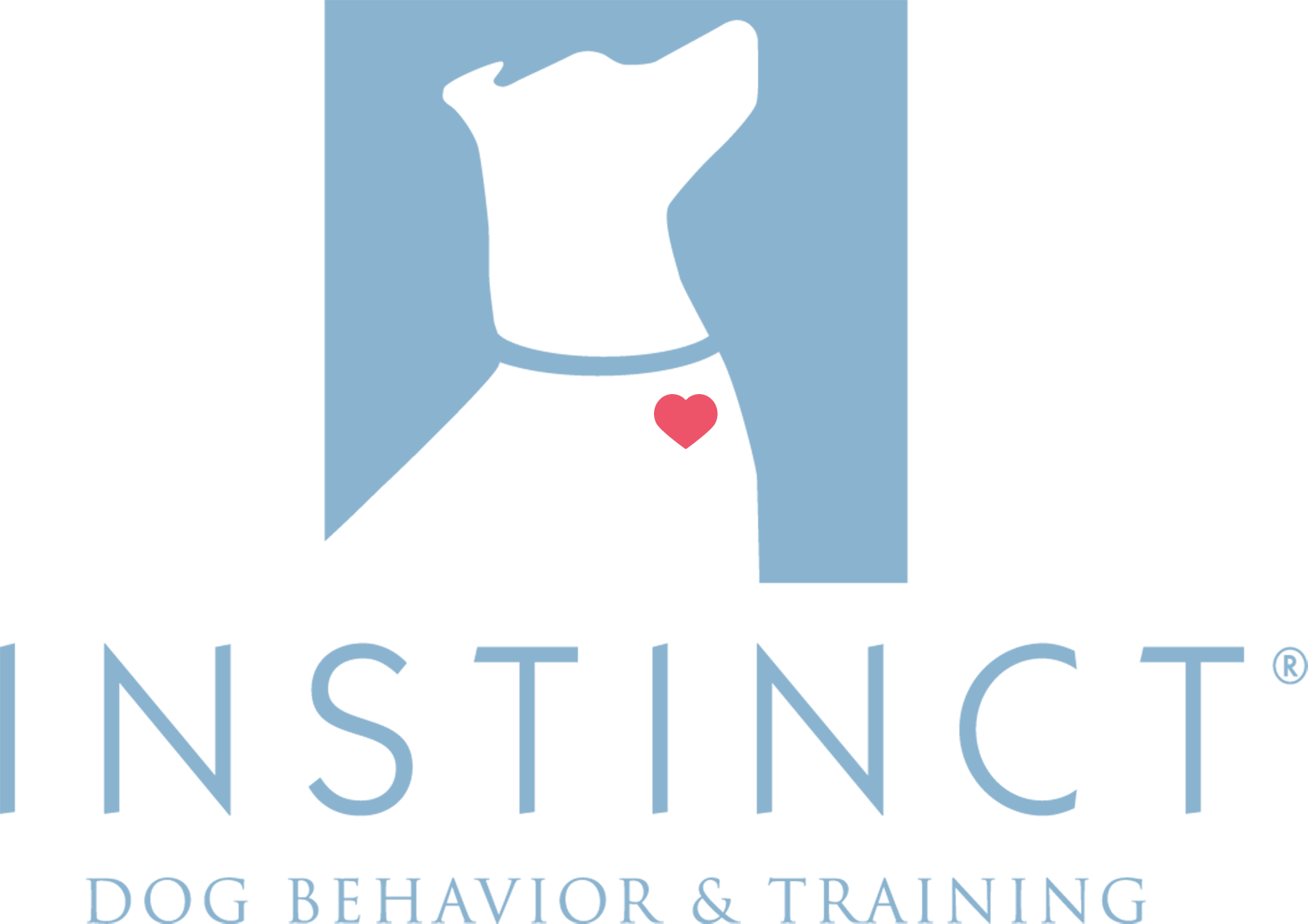Parallels in Physical Rehabilitation & Behavior Modification Programs
If you’re working on a behavior modification plan to help your dog with fear, anxiety, or aggression issues, chances are you’ve pondered (or asked your trainer) at least one of the following questions along the way:
- Is all this “management” really necessary right now? Aren’t we just avoiding the issue?
- How do these exercises relate to the problems we’re having?
- Shouldn’t I maybe test out some trickier scenarios, just to see how my dog does?
- How long are we going to be working on this? Will we ever really be finished?
Those are totally understandable questions. Behavior modification is a foreign process to most of us; as a society, we’re generally far more knowledgeable about the treatment of physical health issues than we are about the treatment of behavioral and emotional ones.
As luck would have it, the process of working through a behavior modification program with your dog shares some similarities to going through the recovery process for a physical health issue, like an injury.
Let’s consider these two theoretical scenarios, one a physical injury, and one a behavior issue:
 #1. PHYSICAL INJURY: Mary Sprains Her Ankle
#1. PHYSICAL INJURY: Mary Sprains Her Ankle
Mary is a cross-country runner. During a race, she rolls her ankle while navigating a rocky trail. She’d been experiencing some low-level ankle pain for a while, but this SERIOUSLY hurts. She hobbles into a hospital emergency room grimacing in pain. She is examined by the doctor, receives x-rays, and is diagnosed with a badly sprained ankle.
 #2. BEHAVIOR ISSUE: Fluffy is Displaying Dog-Directed Aggression & Reactivity
#2. BEHAVIOR ISSUE: Fluffy is Displaying Dog-Directed Aggression & Reactivity
Over the past year, Fluffy the dog has started getting in fights at the dog park and displaying increasing levels of reactivity toward dogs on walks. Fluffy is actively scanning for other dogs on walks; reactions are intense, and she takes a long time to recover after a blow-up. A behavior consultant meets with the owner, Sam, and determines Fluffy’s aggressive behavior is motivated by a combination of fear and frustration.
It’s pretty apparent that each of these individuals needs some treatment to help improve their current situation. In each case, the treatment will occur in phases. Each phase – from acute care to rehabilitation to long-term prevention & management – is a necessary and important part of a successful treatment plan. Exactly how long each phase lasts will depend on the individual.

Treatment Phase 1: ACUTE CARE
Implement immediate, temporary interventions to prevent injury or behavior issue from worsening; allow the body (or brain) to get to a place where physical therapy or behavior modification can effectively begin.
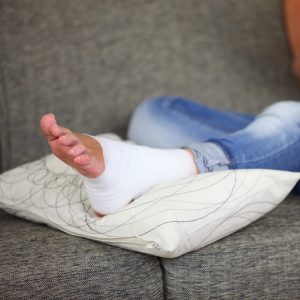 ACUTE CARE for MARY
ACUTE CARE for MARY
MARY is given a compression wrap and crutches. For the next 5-7 days, she is told to avoid putting weight on the ankle. She is to rest, apply ice every 20 minutes during the day, keep the ankle elevated when possible, and take anti-inflammatories to help reduce swelling so that healing can occur, and physical therapy can begin.
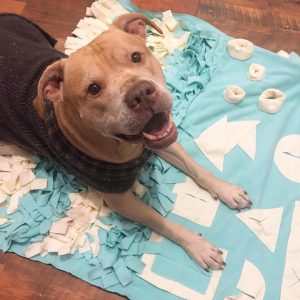 ACUTE CARE FOR FLUFFY
ACUTE CARE FOR FLUFFY
SAM is advised to stop taking Fluffy to the dog park and to avoid walking routes where there is any chance of encountering other dogs. She is told to give Fluffy a “stress vacation,” avoiding stressful experiences while providing positive, relaxing activities. The goal is to reduce any chronically elevated stress levels so that learning can occur, and behavior modification can begin. Sam is also advised to contact a local veterinary behaviorist to determine whether medication would be helpful in setting the stage for learning to occur.
Treatment Phase 2: REHABILITATION
Physical therapy or behavior modification begins, focused on building/rebuilding the individual’s relevant functional abilities. Rehab occurs gradually to reduce the risk of re-injury/regression.
 REHABILITATION for MARY
REHABILITATION for MARY
MARY starts her physical therapy. She begins with low-impact stretching exercises. Over weeks and months, she slowly and carefully builds up to more rigorous, high-impact physical exercises. Throughout, the focus is on rebuilding strength and flexibility in her injured ankle and the rest of her body.

REHABILITATION FOR FLUFFY
SAM starts working with Fluffy on confidence building, frustration tolerance & attention on leash. She also starts Fluffy on a behavior medication to help her better cope with stress and frustration. Over weeks and months, she works on desensitization and counterconditioning around other dogs on walks to help Fluffy feel more relaxed and comfortable when she encounters other dogs at increasingly close distances. They also work on slow, careful one-on-one introductions to appropriate doggy playmates at the behavior consultant’s training facility.
Treatment Phase 3: PREVENTION & MANAGEMENT
Ongoing maintenance exercises serve to retain progress made during rehabilitation. Semi-permanent or permanent alterations to lifestyle and/or environment mitigate risks of re-injury/regression.
 PREVENTION & MANAGEMENT for MARY
PREVENTION & MANAGEMENT for MARY
MARY is running regularly again! She wears an ankle wrap and new, more supportive shoes on runs to provide her ankle with extra stability, and she avoids rocky and uneven trails. During humid weather, she takes pain medication to manage some mild arthritis in her ankle, and she takes a few days off to rest if her ankle starts bothering her. She goes to the gym and does regular strength training and stretching exercises to reduce risk of reinjury.
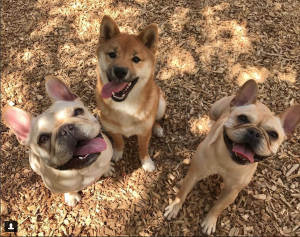
PREVENTION & MANAGEMENT FOR FLUFFY
SAM and Fluffy go on daily walks and are able to pass most dogs successfully! Sam uses a front-clip harness and brings treats with her on walks so she can continue to practice & reinforce the skills they worked on during behavior modification. Fluffy still takes daily behavior medication, but the dose has been reduced. Sam avoids walking routes & times of day when dog traffic is especially high. She no longer visits the dog park and instead arranges playdates with a couple of dog friends in her neighborhood. Sam follows a specific protocol when introducing Fluffy to a new dog, and Fluffy wears a comfy basket muzzle until the initial “get to know you” period has passed. There are certain types of dogs that Fluffy just doesn’t enjoy, and Sam avoids those dogs and does not attempt introductions.
Additional Considerations
If you’ve made it this far, congratulations! You’re about to learn a couple of other important parallels hidden within in the descriptions of the treatment phases we just outlined together:
1. SETBACKS HAPPEN.
Sometimes during treatment, we misjudge our progress and our abilities, or we’re faced with an unanticipated, unavoidable situation we’re not yet ready for. As a result, we have setbacks in progress that require us to step back a phase (or spend more time in the current phase) before progressing again. Let’s use our friends, Mary, Sam & Fluffy, as examples again:
 MARY’S SETBACK
MARY’S SETBACK
About 6 weeks into physical therapy, Mary went on vacation and tried running along the beach one morning. About one mile in, she recognized her mistake; her ankle was throbbing. She needed to rest for a few days and take meds to alleviate the swelling and pain. Her physical therapist instructed her to go back to her “Week 4” exercises, then work her way back up to where she was pre-beach run.

FLUFFY’S SETBACK
Fluffy was making some exciting, positive strides during her behavior modification program. She was becoming less reactive & hypervigilant on walks, and she seemed more relaxed at home too. After about 4 weeks of practice, Sam decided to try taking Fluffy back to the dog park, just to see if she did better after the 4-week break. About 10 minutes into the visit, Fluffy got into a fight and Sam left in tears. For the next few days, Fluffy was far more reactive to other dogs on walks, even at far distances. Sam took a step back and worked on some of their foundation exercises, and after about a week and a half, the team got back where they were prior to the dog park visit.
Setbacks happen to EVERYONE. All we can do is take a breath, recognize that it’s usually not the end of the world, and get back to work.
2. LIMITATIONS CAN EXIST.
Depending on the severity of, and/or genetic predisposition toward the issue, there can be lifelong limitations on the amount of progress to be made. Long term management and modifications to our environment, activities, and routines may be required to reduce the risk of re-injury/regression. Let’s review some limitations that were mentioned in Treatment Phase 3: Prevention & Management for both Mary and Fluffy:
MARY’S LIMITATIONS
- Mary is no longer able to safely run on rocky or rough terrain
- She is required to wear an ankle wrap, along with extra-supportive shoes
- She is required to do regular strength and flexibility conditioning
- She sometimes needs meds to help with the arthritis that resulted from the injury
FLUFFY’S LIMITATIONS
- Fluffy requires ongoing reinforcement of her new, more appropriate behaviors
- Sam avoids very high traffic dog areas
- She and Fluffy will no longer visit the dog park
- Fluffy wears a muzzle when being introduced to new dog friends; not all dogs are candidates to become Fluffy’s friends
- Fluffy continues to take daily behavior medication to help with her low frustration tolerance and her inherent difficulty coping with stress
Limitations are a very real and normal part of the process, both for physical injuries and for behavior issues. If we focus only on the limitations, it’s easy to get discouraged. But the most important parts of Mary’s, and Sam & Fluffy’s, stories is that things are a whole lot better than they were before. Mary is RUNNING again! And Sam & Fluffy are enjoying their walks together, and they have a safe, fun way to meet new dog friends. And that’s AMAZING. The focus is on making things better, not perfect.
Final Thoughts
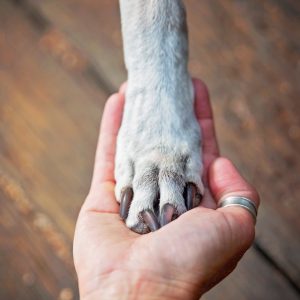 Behavior modification for complex behavior issues is challenging but also unbelievably rewarding and worth it. When we better understand the end-to-end process (and what “finished” really looks like), it can make the journey a whole lot less frustrating and make it easier to celebrate our dogs’ incremental improvements.
Behavior modification for complex behavior issues is challenging but also unbelievably rewarding and worth it. When we better understand the end-to-end process (and what “finished” really looks like), it can make the journey a whole lot less frustrating and make it easier to celebrate our dogs’ incremental improvements.
Keep up the great work, and Happy Training!
